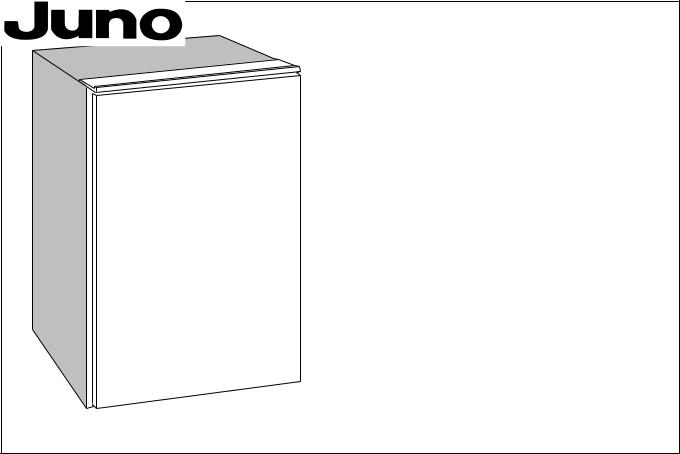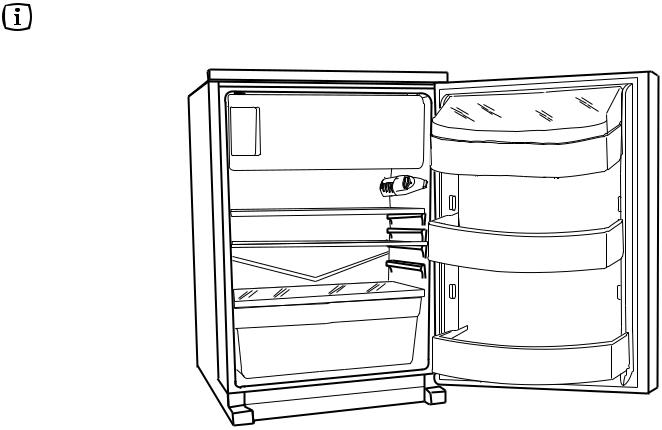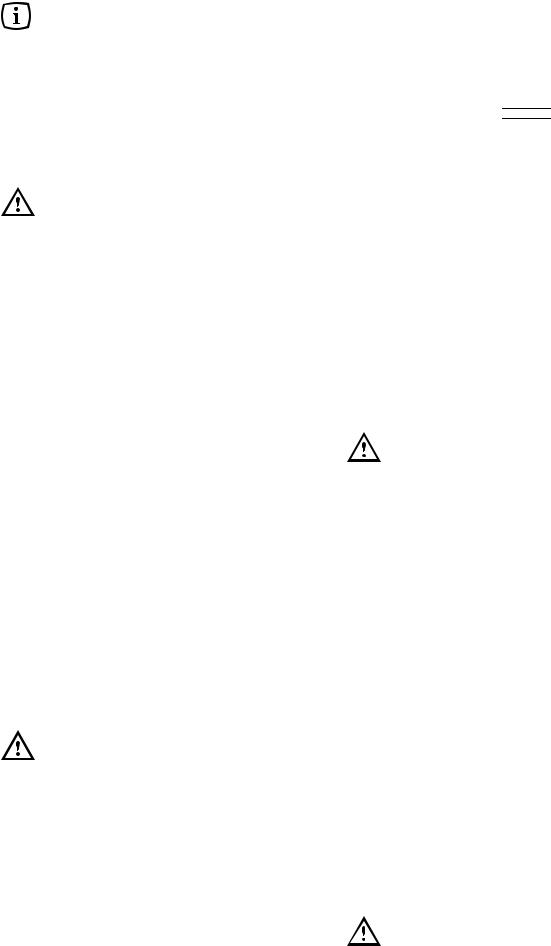Juno JKI1040 Manual

JKI 2435
JKI 1040
GEBRAUCHSANWEISUNG
OPERATING INSTRUCTION
k t
2222748-64
CONTENTS
t
Instructions for the user
Important Safety Instructions
Description of the appliance Use
Cleaning the interior
Starting-up
Temperatur control
Fresh food refrigeration
Freezing fresh food
Storage of frozen food
Thawing
Ice-cube production
Movable shelves
Positioning the door shelves
Instructions for the installer
16 |
Technical specifications |
22 |
|
17 |
Installation |
22 |
|
18 |
Positioning |
22 |
|
18 |
Electrical connection |
22 |
|
Door reversibility |
23 |
||
18 |
|||
Inner door reversal |
23 |
||
18 |
|||
Instructions for totally built-in appliances |
24 |
||
18 |
|||
|
|
||
18 |
|
|
|
18 |
|
|
|
18 |
|
|
|
18 |
|
|
19
19
Hints |
19 |
Hints for refrigeration |
19 |
Hints for freezing |
20 |
Hints for storage of frozen food |
20 |
Maintenance |
20 |
Defrosting |
20 |
Periodic cleaning |
21 |
Periodic of non-operation |
21 |
Interior light |
21 |
Customer service and |
|
spare parts |
22 |
15
 IMPORTANT SAFETY INSTRUCTIONS
IMPORTANT SAFETY INSTRUCTIONS
It is most important that this instruction book should be retained with the appliance for future reference.
Should the appliance be sold or transferred to another owner, or should you move house and leave the appliance, always ensure that the book is supplied with the appliance in order that the new owner can be acquainted with the functioning of the appliance and the relevant warnings.
These warnings are provided in the interest of safety. You must read them carefully before installing or using the appliance.
General Safety
■This appliance is designed to be operated by adults. Children should not be allowed to tamper with the controls or play with the product.
■It is dangerous to alter the specifications or modify this product in any way.
■Before any cleaning or maintenance work is carried out, be sure to switch off and unplug the appliance.
■This appliance is heavy. Care should be taken when moving it.
■Ice follies can cause frost burns if consumed straight from the appliance.
■Take utmost care when handling your appliance so as not to cause any damages to the cooling unit with consequent possible fluid leakages.
■The appliance must not be located close to radiators or gas cookers.
■Avoid prolonged exposure of the appliance to direct sunlight.
■There must be adequate ventilation round the back of the appliance and any damage to the refrigerant circuit must be avoided.
■For freezers only (except built-in models): an ideal location is the cellar or basement.
■Do not use other electrical appliances (such as ice cream makers) inside of refrigerating appliances.
Service / Repair
■Any electrical work required to install this appliance should be carried out by a qualified electrician or competent person.
■This appliance should be serviced by an authorised Service Centre, and only genuine spare parts should be used.
■Under no circumstances should you attempt to repair the appliance yourself. Repairs carried out by inexperienced persons may cause injury or more serious malfunctioning. Refer to your local Service Centre, and always insist on genuine spare parts.
■This appliance contains hydrocarbons in its cooling unit; maintenance and recharging must therefore only be carried out by authorised technicians.
Use
■The domestic refrigerators and freezers are designed to be used specifically for the storage of edible foodstuffs only.
■Warning: when the ambient temperature is not included within the range indicated for the class of this appliance, the following instructions must be observed: when the ambient temperature drops below the minimum level, the storage temperature in the freezer compartment cannot be guaranteed; therefore it is advisable to use the food stored as soon as possible.
■Frozen food must not be re-frozen once it has been thawed out.
■Manufacturers’ storage recommendations should be strictly adhered to. Refer to relevant instructions.
■The inner lining of the appliance consists of channels through which the refrigerant passes. If these should be punctured this would damage the appliance beyond repair and cause food loss. DO NOT USE SHARP INSTRUMENTS to scrape off frost or ice. Frost may be removed by using the scraper provided. Under no circumstances should solid ice be forced off the liner. Solid ice should be allowed to thaw when defrosting the appliance. See defrost instructions.
■Do not place carbonated or fizzy drinks in the freezer as it creates pressure on the container, which may cause it to explode, resulting in damage to the appliance. Do not use a mechanical device or any artificial means to speed up the thawing process other than those recommended by the manufacturer. Never use metal objects for cleaning your appliance as it may get damaged.
16

Installation
■Care must be taken to ensure that the appliance does not stand on the electrical supply cable. Important: if the supply cord is damaged, it must be replaced by a special cord or assembly available from the manufacturer or its service agent.
■During normal operation, the condenser and compressor at the back of the appliance heat up considerably. For safety reasons, minimum ventilation must be as shown in the relevant paragraph.
Attention: keep ventilation openings clear of obstruction.
■If the appliance is transported horizontally, it is possible that the oil contained in the compressor flows in the refrigerant circuit. It is advisable to wait at least two hours before connecting the appliance to allow the oil to flow back in the compressor.
■There are working parts in this product which heat up. Always ensure that there is adequate ventilation as a failure to do this will result in component failure and possible food loss. See installation instructions.
■Parts which heat up should not be exposed. Wherever possible the back of the product should be against a wall.
t
■If the appliance has been transported horizontally, it is possible that the oil contained in the compressor flows in the refrigerant circuit. It is advisable to wait at least two hours before connecting the appliance to allow the oil to flow back in the compressor.
 Environment Protection
Environment Protection
■This appliance does not contain gasses which could damage the ozone layer, in either its refrigerant circuit or insulation materials. The appliance shall not be discarded together with the urban refuse and rubbish. Avoid damaging the cooling unit, especially at the rear near the heat exchanger. Information on your local disposal sites may be obtained from your municipal authorities.
■The materials used on this appliance marked with the symbol 
 are recyclable.
are recyclable.
DESCRIPTION OF THE APPLIANCE
Butter shelf |
|
|
|
||
Shelf |
|
|
Bottle shelf |
|
|
Salad drawer |
|
|
Storage shelves |
|
|
|
|
|
Thermostat |
|
|
Freezing compartment |
|
|
|
|
17

USE
Cleaning the interior |
Freezing fresh food |
Before using the appliance for the first time, wash the interior and all internal accessories with lukewarm water and some neutral soap so as to remove the typical smell of a brand-new product, then dry thoroughly.
Do not use detergents or abrasive powders, as these will damage the finish.
Starting-up
Insert the plug into the wall socket.
Open the door and turn the thermostat control knob, to be found on the upper right hand side of the inner compartment, clockwise beyond position «O» (OFF) to start the appliance.
Temperature control
Temperature adjustment is obtained by turning the thermostat knob clockwise until its pointer coincides with the required setting.
A medium setting is generally the most suitable.
The minimum setting (least cold) is represented by the lowest number and the maximum setting (coldest) by the highest number. In any case, bear in mind that the temperature can be either increased (warmer) by turning the thermostat knob anticlockwise or decreased (colder) by turning it clockwise.
The thermostat knob setting should be adjusted depending on the inner temperature of the refrigerator, which, in turn, depends on a number of factors, such as: the ambient temperature, the number of times the door is opened, the quantity of food stored and the location of the appliance.
Warning
If the ambient temperature is high, the thermostat knob is on the coldest setting (higher numbers) and the appliance is fully loaded, the compressor may run continuously, causing frost or ice to form on the evaporator. If this happens, turn the knob to a warmer setting (lower numbers) to allow automatic defrosting and so a saving in electricity consumption.
18
The 4-star compartment ( 



 ) is suitable for long term storage of commercially frozen food and for freezing fresh food.
) is suitable for long term storage of commercially frozen food and for freezing fresh food.
To freeze fresh foods it is not necessary to change the setting of the thermostat knob.
However, for a quicker freezing operation, turn the thermostat knob to the coldest setting; but remember that, in this condition, the refrigerator compartment temperature might drop below 0°C. If this occurs reset thermostat knob to a warmer setting.
Storage of frozen food
When first starting-up or after a period out of use, before putting the products in the compartment let the appliance run for at least two hours on the coldest setting, then turn the thermostat knob to the normal operating position.
Important
If there is a power failure when food is in the freezer, do not open the door of the freezer compartment. The frozen food will not be affected if the power cut is of short duration (up to 12 hours) and the freezer compartment is full, otherwise, it is recommended that the food should be used within a short time (a temperature increase of the frozen food shortens its safe storage period).
Thawing
Deep-frozen or frozen food, prior to being used, can be thawed in the refrigerator compartment or at room temperature, depending on the time available for this operation.
Small pieces may even be cooked still frozen, directly from the freezer: in this case, cooking will take longer.
Ice-cube production
This appliance is equipped with one or more trays for the production of ice-cubes.
Fill these trays with water, then put them in the freezer compartment.
Do not use metallic instruments to remove the trays from the freezer.
